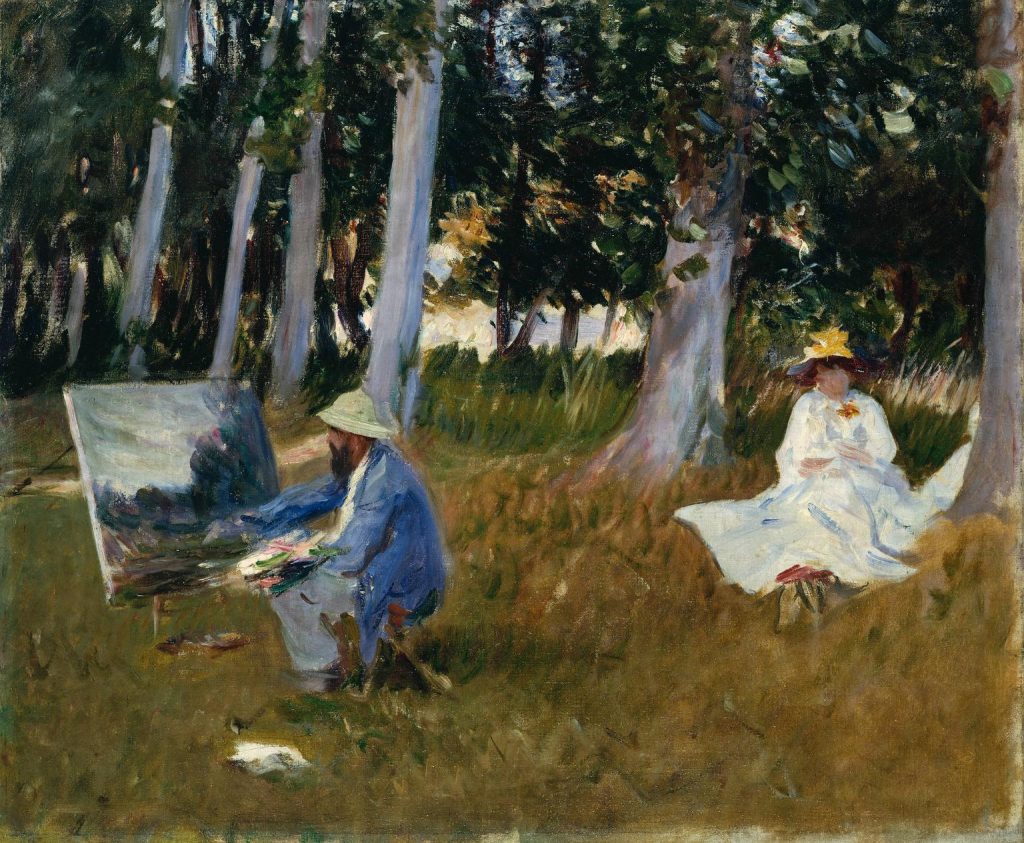Paint tube
09.10.2018
John Singer Sargent (1856-1925) - Claude Monet peignant à l’orée d'un bois, en 1885 (peinture produite par Miss Emily Sargent et Mrs Ormond grâce au National Art Collections Fund en 1925), Tate Modern, Londres
The invention of the paint tube in the 19th century changed the pictorial landscape. This new way of packaging colour pigments had a major impact on the artistic world. And artists would subsequently change their painting methods in this new, technologically progressive world.
From the European history of painting until the evolution of Impressionism in the 19th century, the renown of a master and his studio and students was not just down to his skill and painting method but also the quality of the colour of the paints that he used: each artist procured his own pigments and sources varied. Students ground the pigments and mixed them with a binding material and there was an element of secrecy involved in their preparation. The colours were unique to each studio, or to each city where a tradition and techniques prevailed. These processes were carried out in secrecy. Binding materials such as different kinds of oils, resins and egg yolks were sometimes mixed with other mysterious substances such as arsenic, crushed up semi-precious stones and the dried excrement of animals, rumoured to have supernatural properties…
This new era of the 19th century was the dawn of much change. Studios began to fade away and art schools popped up. Colour pigment sellers gradually replaced students grinding pigments for their masters. The art industry thus invested in colour which was now being manufactured using standardised processes. Painting was becoming a profitable business. In addition to professional artists there were now Sunday painters or dabblers. The range of coloured paints was expanding.
The big problem with oil paints was how to package them. Pig bladders were simply not up to the job. In 1841 the American artist John Goffe Rand filed a tube patent so that paint could be contained in a tin tube with a lid. Paint packaged in tin tubes came from England, marketed by art suppliers Winsor & Newton. Over in France, Lefranc & Bourgeois were a big part of this change by making improvements to the substances added, making them less toxic on the one hand and on the other, ensuring that the shades of paint sold had more stability and fixity. The high point was the marketing of a flexible tube with a screw top in 1859. These new paints had better adhesion properties on a variety of canvases, were more indelible, dried better (and faster), kept their shades over time and shine and dullness were easier to obtain. Best of all, the paint inside the tubes was far more mobile, meaning artists could paint in situ – often outside.
Although the paint tube appeared three decades before the official date given for the start of Impressionism – the stirrings of which obviously had more ancient roots and filiations – it was given a decisive role in the evolution of pictorial art. The tube of paint, along with the flourishing of trains and photography, two concomitantly technological and technical evolutions that urged the art of painting to move with its time, breaking with old traditions.
Photography and portraiture exempted pictorial art from a mimetic representation of reality in some way.
The era was one of movement on one hand with great technical and scientific developments and the old order was turned on its head. On the other hand, it was the era of a society of citizens, that is to say individuals whose thoughts and feelings were legitimate and expressible. These two aspects were reflected in the artist’s desire to capture movement and what was fleeting, to formally interpret senses perceived, or his “impressions”. Brushstrokes were faster, canvases often smaller, to capture the light changing on subject matter from one minute to the next. Tubes of oil paint helped these pictorial adventures to take place. The artist with his easel, brushes and tubes was painting in the countryside whereas before he had to draw sketches and finish paintings off in the studio. And trains meant that he could travel to remote rural areas or to places where the views and light were renowned. Finally, train times also forced artists to finish their canvases before nightfall…
So Impressionism is considerably indebted to the invention of the tube of paint. It might never have taken place without it.

